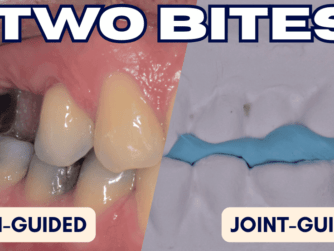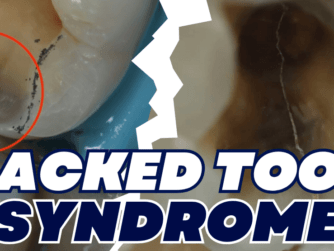Podcast: Play in new window | Download (Duration: 1:18:14 — 109.9MB)
Subscribe: RSS
In this episode with Dr. Carlos Sanchez, we’re going to take a look at the concept of additive equilibration as a way of managing tooth wear. In other words, it’s an occlusion-based technique that involves adding composite or ceramic to achieve the ideal restorative results and we’re going to try to help you understand what that is. There are also some themes that are discussed in the same way as the Dahl technique.
Protrusive dental Pearl: Keeping PTFE tape secure – a straightforward trick I found to keep the PTFE so it doesn’t get sucked away is to floss the PTFE through more distal contacts. It gives the PTFE some security and resistance to being sucked away. So it’s not going to make that horrible sound and you get to keep that PTFE in the stable place!
If you want to improve your skills and your understanding of occlusion, I’ve set up a free monthly resource for you starting this August! Just head to www.occlusion.wtf to sign up for monthly occlusion goodness.
Highlights of this episode:
- 2:40 Protrusive Dental Pearl – Keeping PTFE tape secure
- 9: 43 Fundamentals of Additive Equilibration
- 37:28 Journey of Additive Equilibration
- 44:22 Additive Equilibration workflow in generalized wear cases
- 1:00:37 Restoring lateral and central incisors for aesthetic reasons (after canines)
- 1:06:36 Anterior coupling in class two increased overjet cases
Check out CaSi 3C Instrument and all the other instruments that Dr. Carlos has made. Distributed by CosmeDent and Enlighten Smiles in the UK
Another instrument you need to check out on Dr. Carlos’ website is this Vacu-Grip. This little plastic insert that fits in your suction would hold your crown like an extra gravity.
Check this Easy Peasy technique that Dr. Jaz mentioned: The ESIPC Jig
If you liked this episode, you will also enjoy Basics of Occlusion







